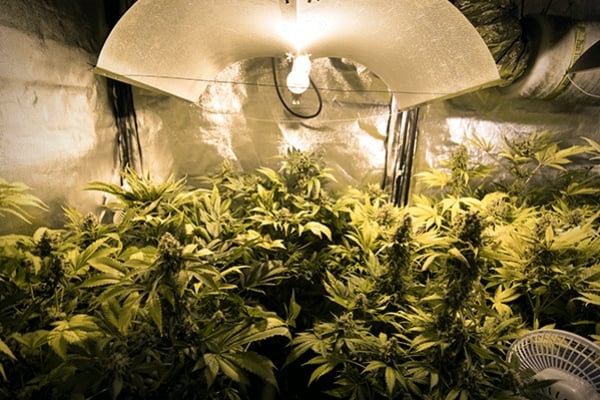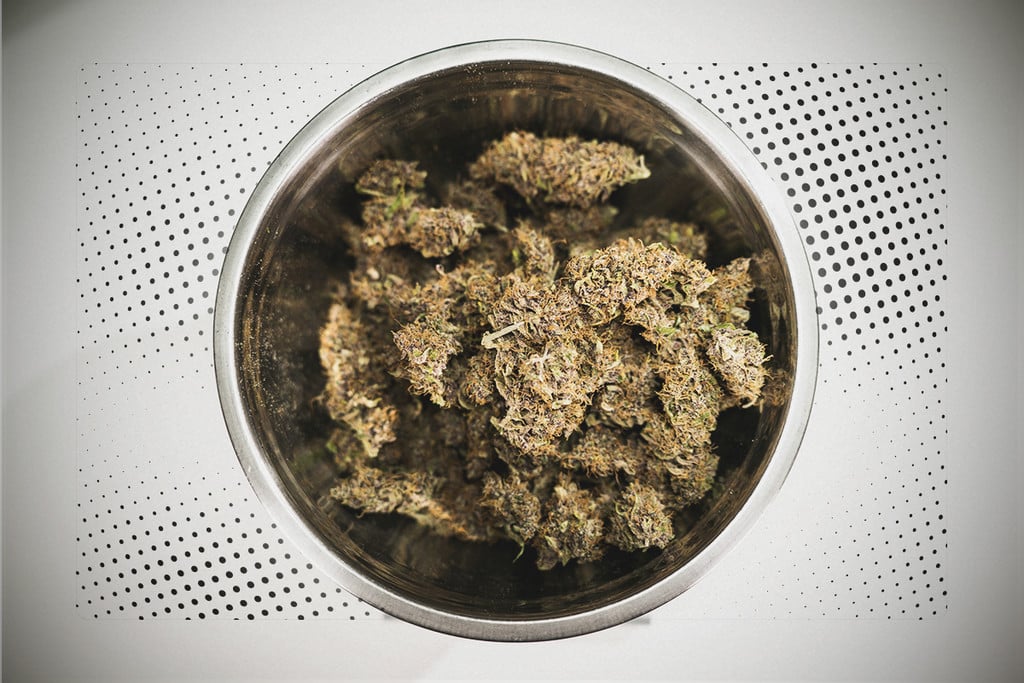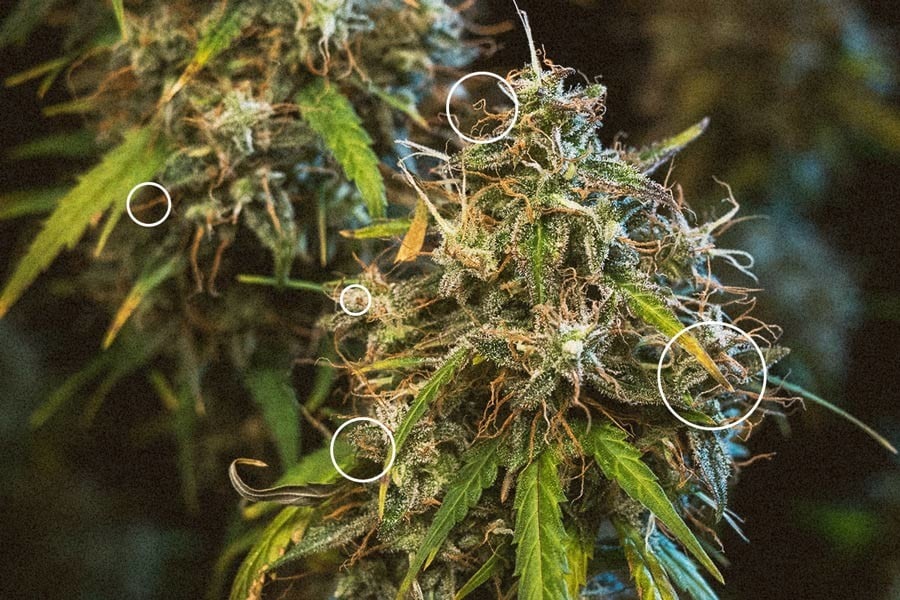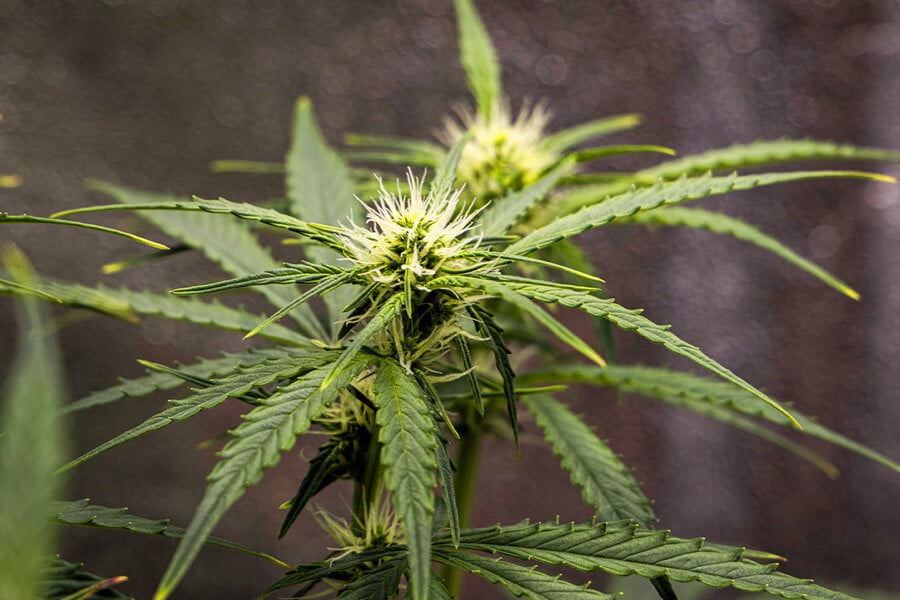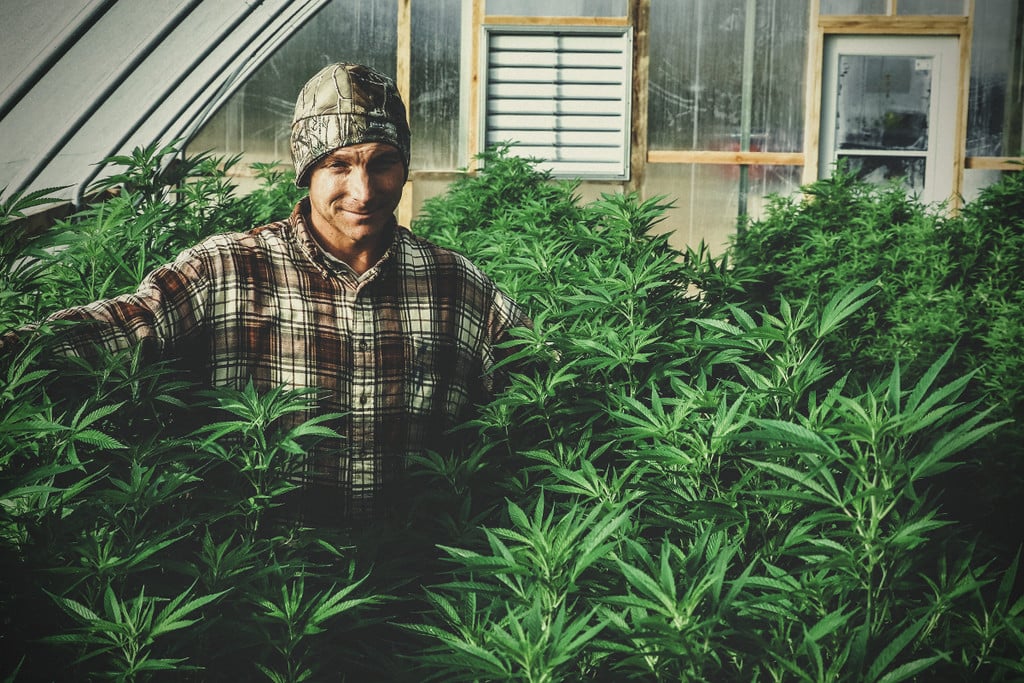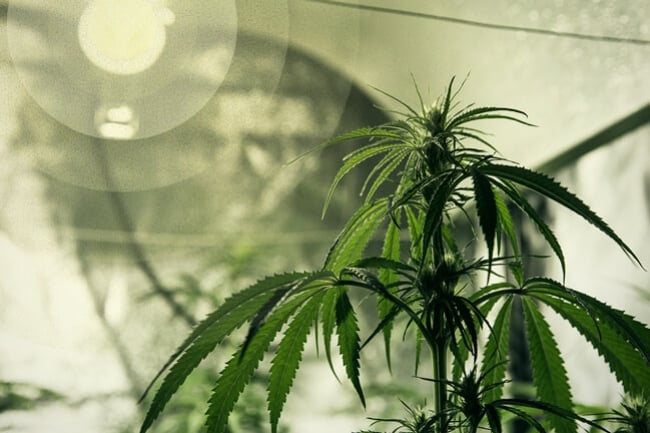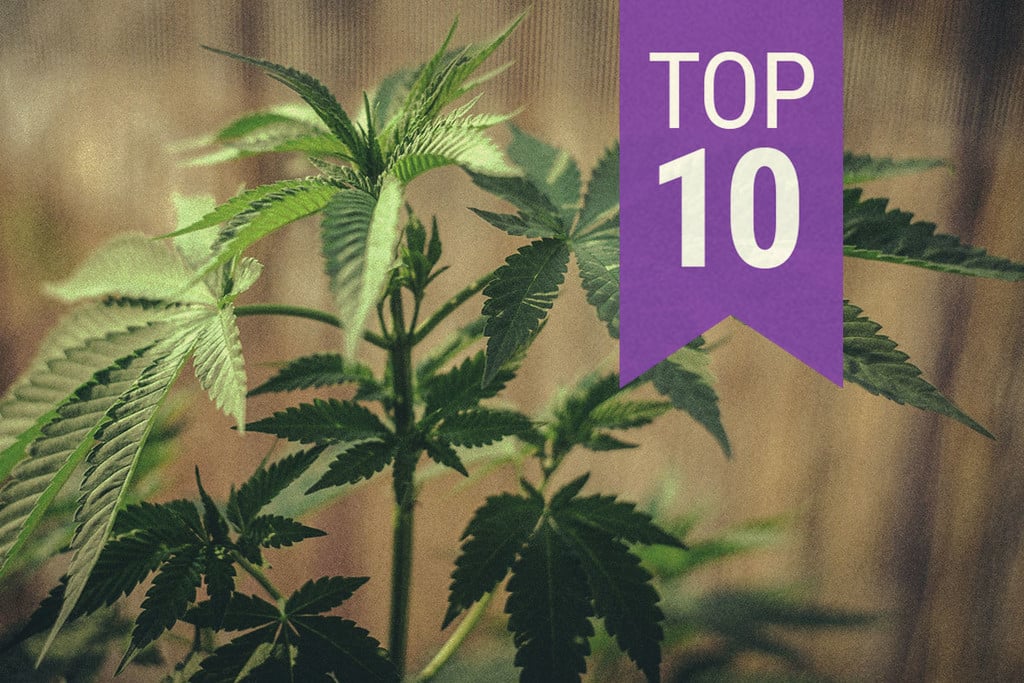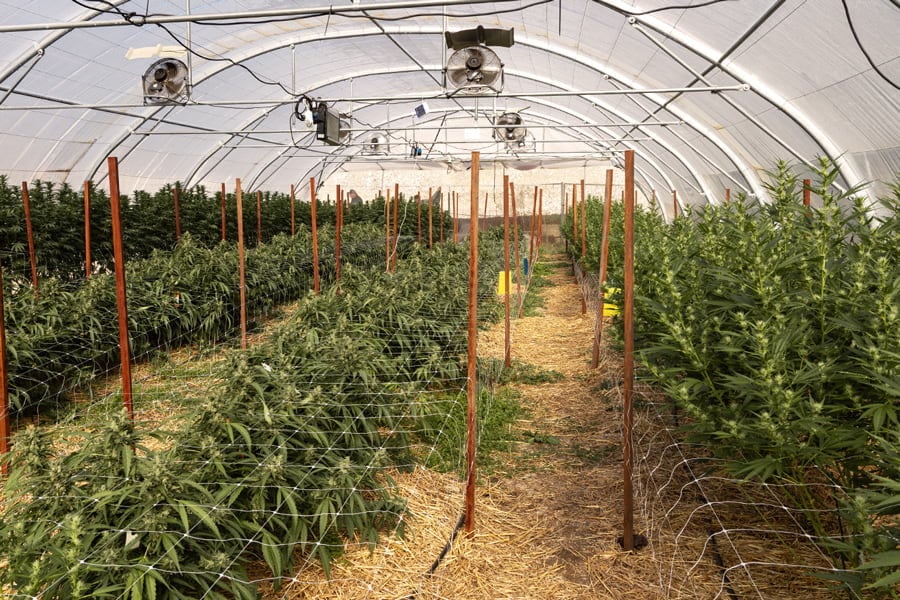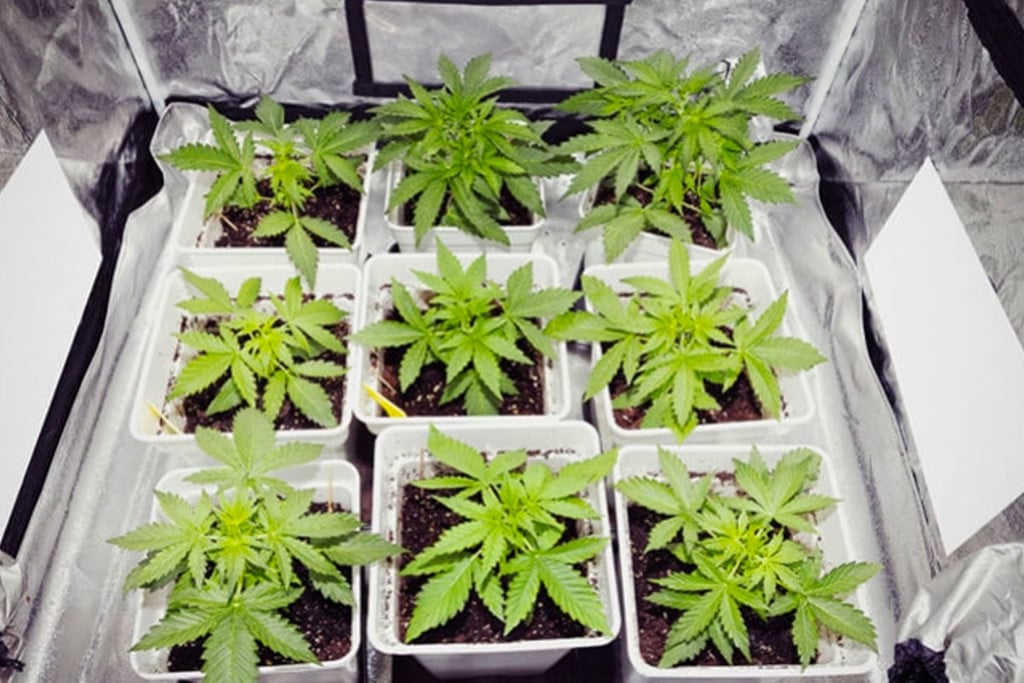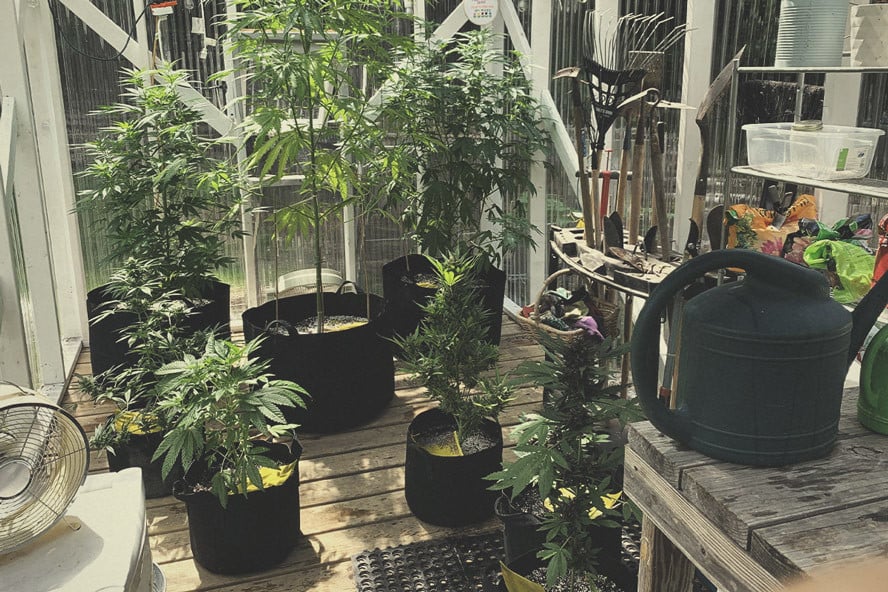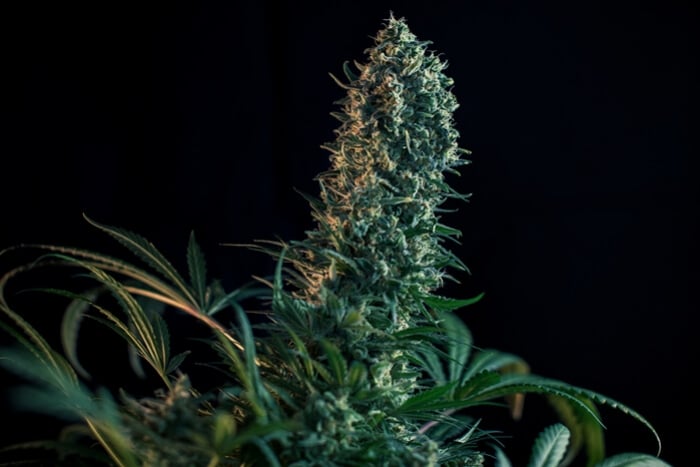.
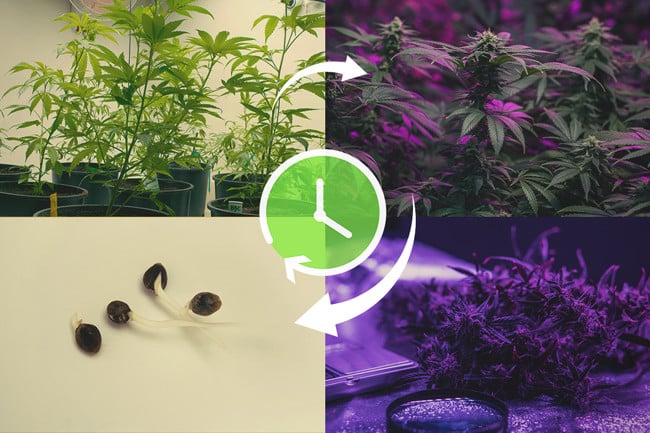
Perpetual Harvest Method: Ensure Multiple Harvests Of Ripe Buds Per Year
The perpetual harvest method can result in more weed than you could ever smoke. Read on to find out how to create a bud overload.
Contents:
Growing cannabis using the perpetual harvest method means a continuous supply of buds. Doing a perpetual harvest just requires a little more space, some extra gear, and some good timing. Once you get into the flow of things, you will realise just how easy having a steady supply of buds can be.
At its simplest, the perpetual harvest is when one set of plants is harvested in a flowering space, then is replaced immediately by plants that have already completed vegetation in a separate space. The vegetation space is then replenished with freshly sprouted seed stock or clones. Once the timing is mastered, it is possible to ensure a harvest every 8–12 weeks depending on species flowering time.
SEPARATE VEG AND FLOWER
Vegetative and flowering cannabis plants are exposed to different types and amounts of light. With the exception of autoflowers, it is impossible to have infant and mature plants in the same area. The solution is having two separate growing spaces, or a single growing space split into two in some fashion. Two rooms, two grow tents, two cupboards, you get the picture—in perpetual use, one for vegetation and one for flowering.
WHY PERPETUAL HARVEST?
The perpetual harvest experience has two distinct advantages. First and foremost is never running out of weed. With many contemporary hybrids, maturing time is only around 8 weeks. This means a fresh batch of replacement nuggets every two months. Being caught out with no weed and resorting to buying it can be a real bummer and burn a hole in your pocket pretty quickly. So with a little extra effort and good timing, rapid turnover can mean 6 harvests per year.
Second is disaster insurance. If something goes bad in the flowering room and a crop is lost for any reason—such as pathogens like bud or root rot, accidental poisoning from a nutrient or pH mistake, etc.—then there are quick replacements available from the veg space and you don’t have to go right back to the start. Losing a few weeks is tolerable, but losing 10 weeks or more of work is heartbreaking.
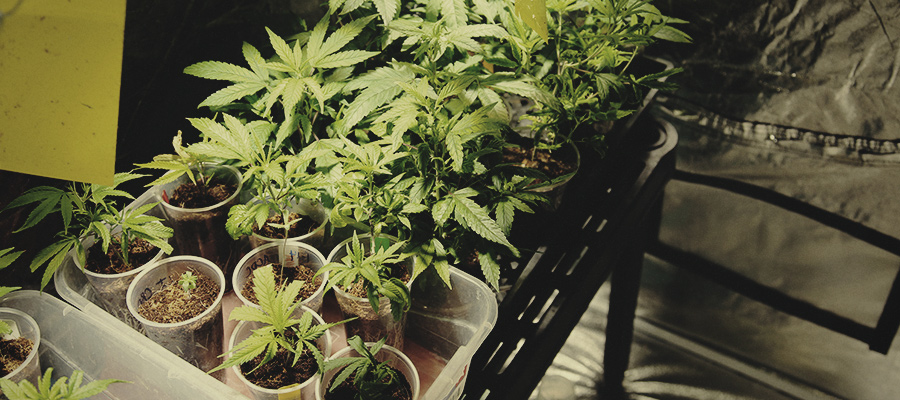
OF COURSE IT COSTS MORE, BUT...
There are added costs of course—not doubled though, as plants in the vegetative phase require less of everything to grow well. Smaller pots in a smaller space under weaker lights, like T5s for example, require fewer resources to maintain. But they are still extras, and there will be an increase in power, nutrients, and grow medium costs to consider. The added setup cost with all the hardware balances out in the end when the jars are overflowing, all the time.
It goes without saying that perpetual harvests mean additional time requirements from you, the grower. Maintaining twice as many plants will require your extra attention with each stage. A perpetual vegetation chamber will typically demand regular topping and training, or other actions that promote vigorous growth. But who doesn’t enjoy spending time with their plants?
Whoops, too many buds! Perpetual harvesting can often mean lots of buds leftover when a new harvest is dried and ready. This opens up some exploration doorways into the many uses of cannabis. Extra green can mean that edibles, hash, and any number of extractions become a part of your repertoire.
HOW TO PERPETUAL HARVEST
Create two spaces. By nature, a smaller vegetation space is needed, while a larger flowering space allows plants plenty of room to stretch.
Of course, the size of each space is relative to the room available. A small and a large grow tent are awesome if you have a spare room, but a cupboard with a light-sealed smaller space within it serves the purpose just as well. Configure each chamber appropriately for vegetative or flowering growth.
Free Pro
Harvest Guide!

THE FIRST CROP
The first crop will take a standard amount of time for a veg-to-flower grow, but once the first vegetative cycle is complete, you are in full-swing.
- Create plants for the vegetation chamber either from seed or clones. When they are appropriately sized, place them into the flower chamber.
- Immediately prepare more plants—clones or freshly germinated seeds—to refill the vegetation space.
- After 8 weeks of loving care, the flowers will be ready for harvest again, with replacement plants ready to go.
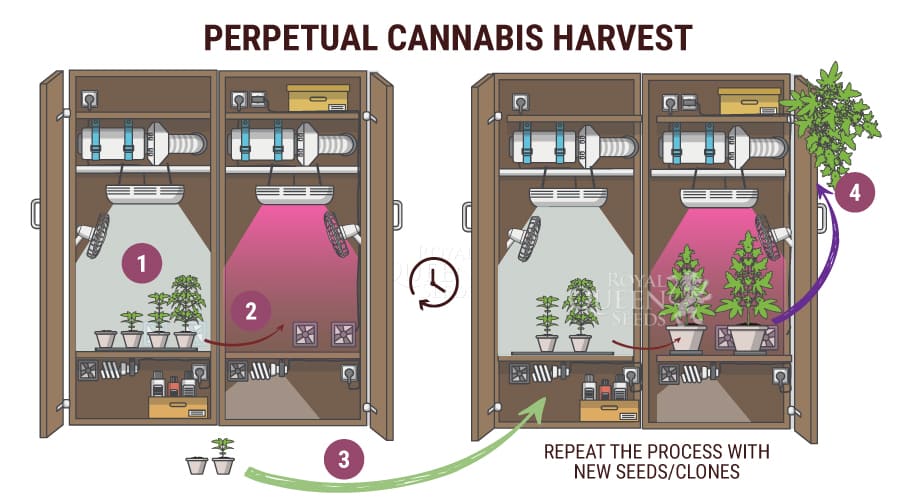
RESET
Depending on the size of your setup, beginning another cycle can be done in an afternoon.
- Harvest existing plants in the flower space.
- Remove pots and clean the area.
- Fill flower space with the plants from the veg space.
- Refill vegetation space with new stock from seed or clones.
- Begin again, and so ad infinitum.
Perpetual harvests need two areas operating simultaneously so fresh plants can be cycled through when they are ready. Try these hints for an efficient setup.
SETTING UP THE VEG SPACE
- During the vegetative phase, plants are smaller and take up far less space and resources. As such, a lower area with less-intense lights than the flowering area will do, such as a raised shelf in a cupboard for the flowering plants to sit on, with the veg chamber below.
- If separating a space into a two-in-one setup, ensure that each is light-tight from the other. Light pollution during the flowering lights-off period can cause poor flower growth, swap plants back to veg, or stimulate hermaphroditism.
- Consider a number of smaller plants, rather than only a few big ones. This shortens the vegetative phase while still filling up the grow space with a reasonable canopy.
SETTING UP THE FLOWER SPACE
- The flowering area must be completely light-proof. Again, light pollution can damage your hard work.
- Heat and humidity control are equally important, especially in smaller spaces, as is vigorous air circulation. Too hot or too cold can affect proper bud formation, while high humidity and poor air circulation can encourage mould. Get the right gear for your situation and a robust oscillating fan.
- With cannabis, contemporary high-terpene hybrids in particular, the smell can be very strong. If discretion dictates odour control, then make sure extract fans and carbon filters are all working properly.
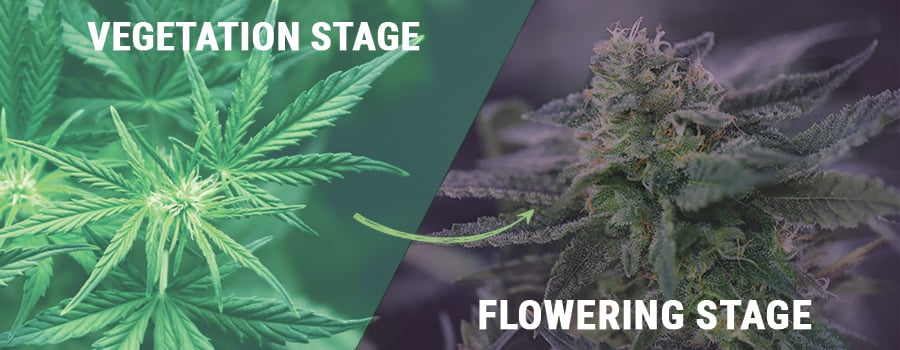
GETTING THE TIMING RIGHT IS STRAIN-RELATED
Timing is key, and this comes with experience, especially experience with your selected strains. When flowers are harvested, you want ideally sized veg plants to put in the flower space right away. Getting appropriately sized plants at the right time means knowing about strain characteristics. Some might grow so quickly that a full 8 weeks isn’t needed for veg, and the veg chamber can be rested for a while. Some may need the full 8 weeks to get to an acceptable size for the 12/12 flip—it’s a pheno wonderland out there.
Strains with a shorter flowering time are ideal for the perpetual harvest method. Many contemporary strains will mature in 8 weeks, and 8 weeks is enough time to get well-vegged plants. An 8-week harvest also means a refill every two months, which is a lovely turnover.
If you do want to grow longer-maturing sativas like the Hazes, for example, then the harvest frequency drops to 4 per year because of the 12-week flowering time. This also means less time is needed for the vegetation period, and money and time are saved while the veg area rests.
Alternatively, you could change the light schedule to 12/12 in the veg chamber when plants are big enough and give them a flowering head start, moving them over to the flower space already pre-flowered. Then, you can simply change the veg space lights back to 18/12 and prepare a new batch of plants.
EXCEPTIONS TO THE RULE
Separate spaces aren’t needed for autoflowering strains, as young or mature plants are all exposed to the same light regimen. So squeezing some infant plants in the spaces between older plants, or around the circumference where light is weaker can give them a head start.
The complete life cycle of many auto strains is only 8–10 weeks, so needing a veg space becomes irrelevant. You can grow from seed to flower in the same amount of time as perpetual harvests. Most contemporary autoflowering varieties have a cannabinoid content in line with photoperiod seed cultivars, so there is no need for concern on quality.
In addition to the quick turnover of autoflowers, there is also another way to speed things up if you’re dealing with feminised photoperiod strains. When seeds are only given 12 hours of light right from germination, they go immediately into flower. The complete vegetative phase is bypassed, resulting in more controlled heights. Flowering from seed also means no veg space, but a number of cannabis species don’t like the treatment very much.
THE PERPETUAL HARVEST ISN’T JUST A PRETTY NAME
With two appropriately kitted out growing spaces, or an equally well-appointed cupboard and some extra hours spent in the grow-op, the perpetual harvest can see any grower with more buds than they need every 8 weeks. It is an ideal way to try a number of different strains in a year, and find ones that suit your setup and suit your mind!


























